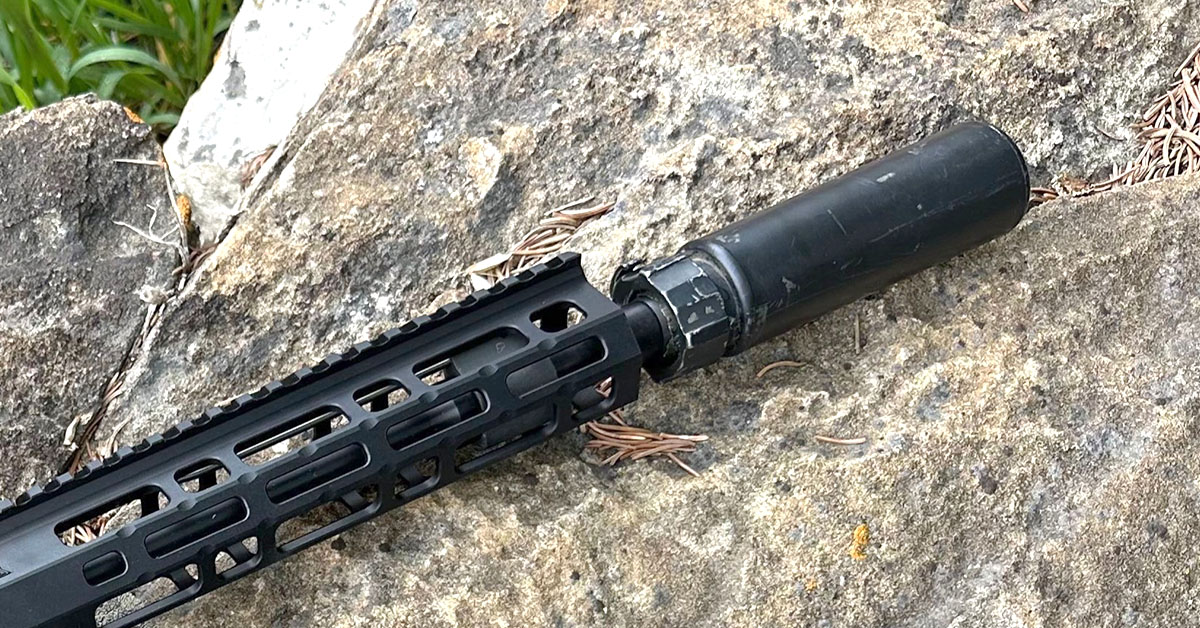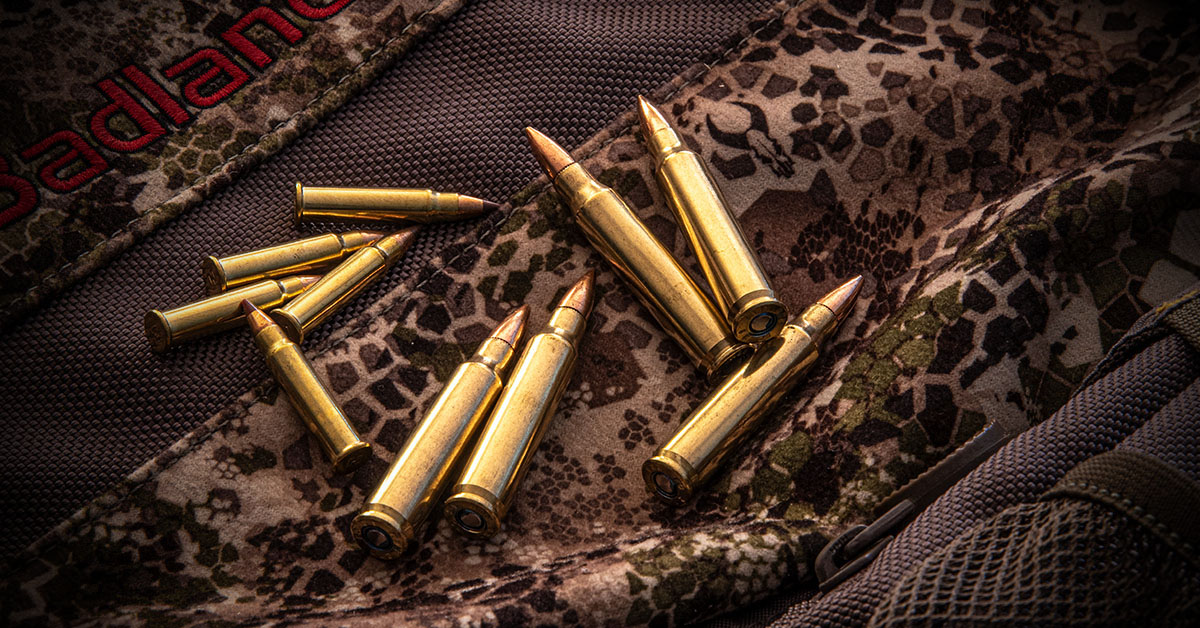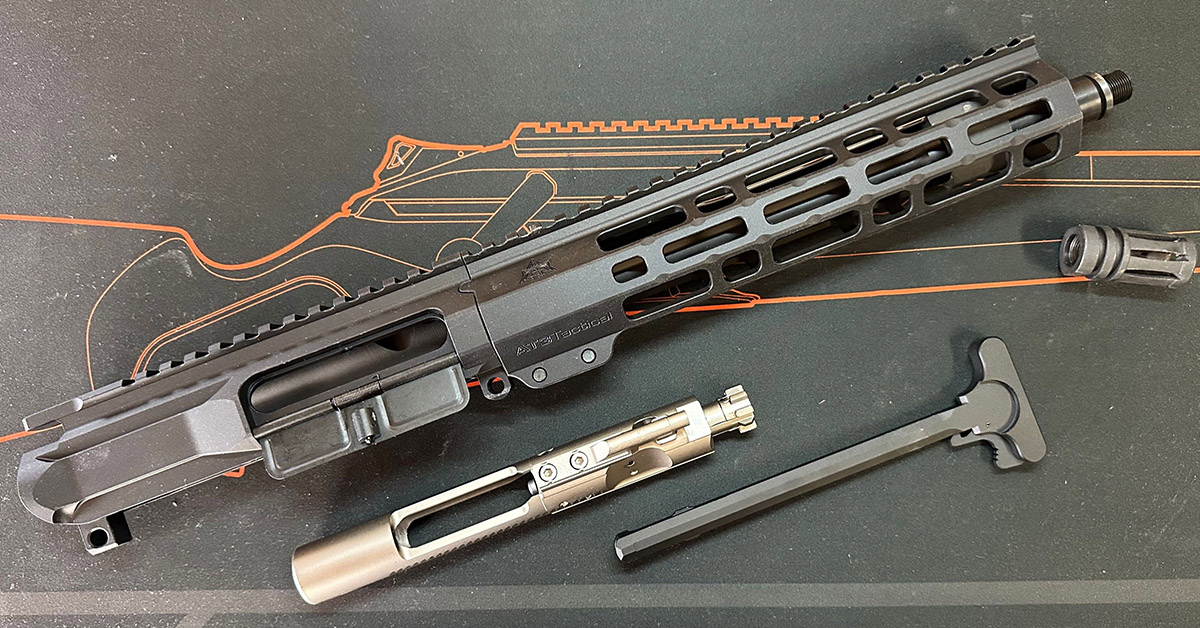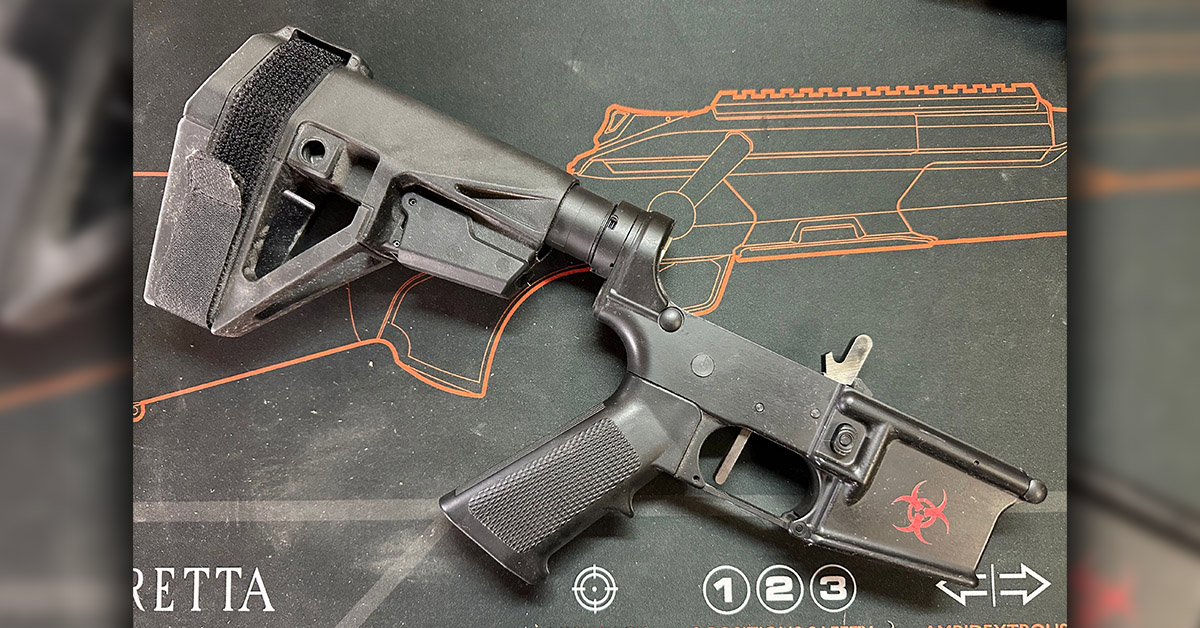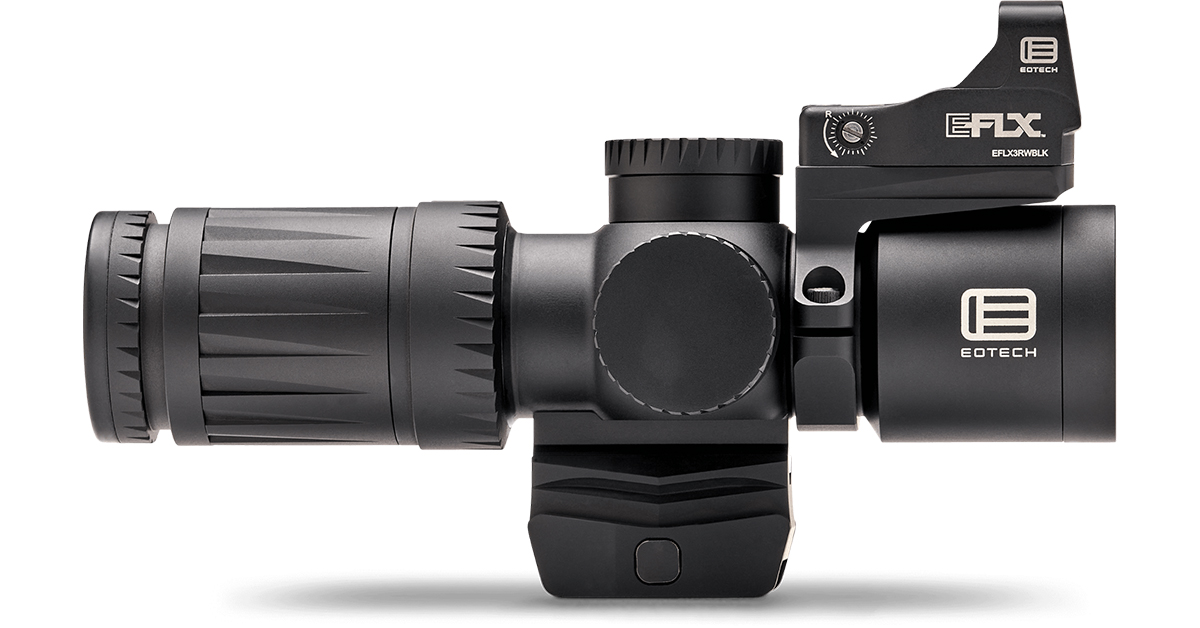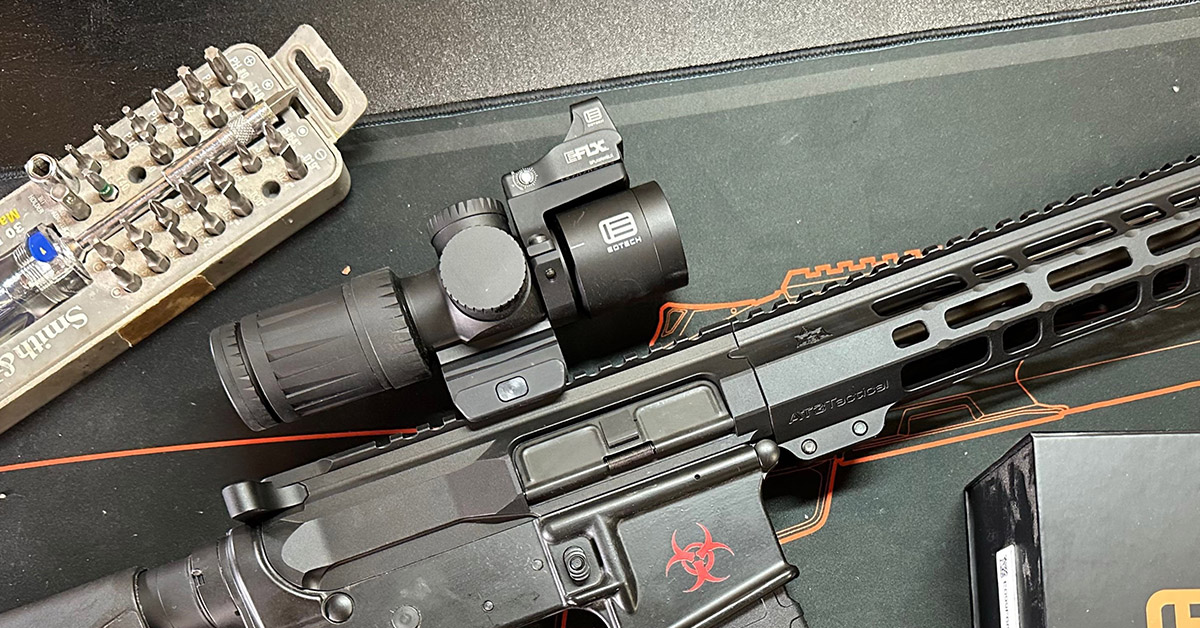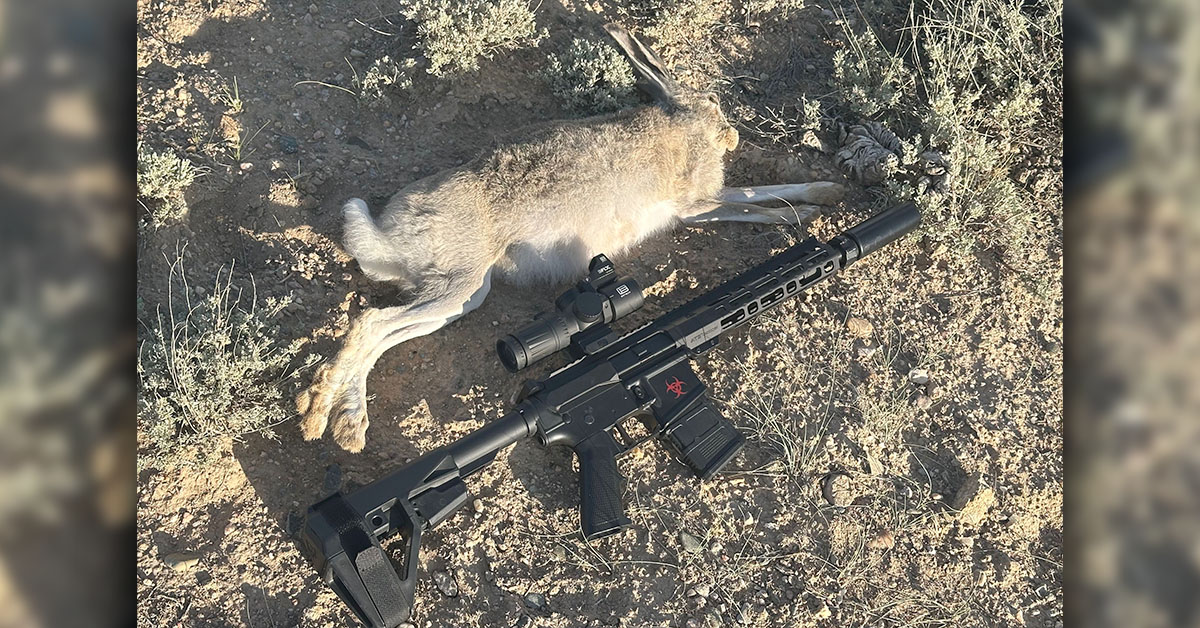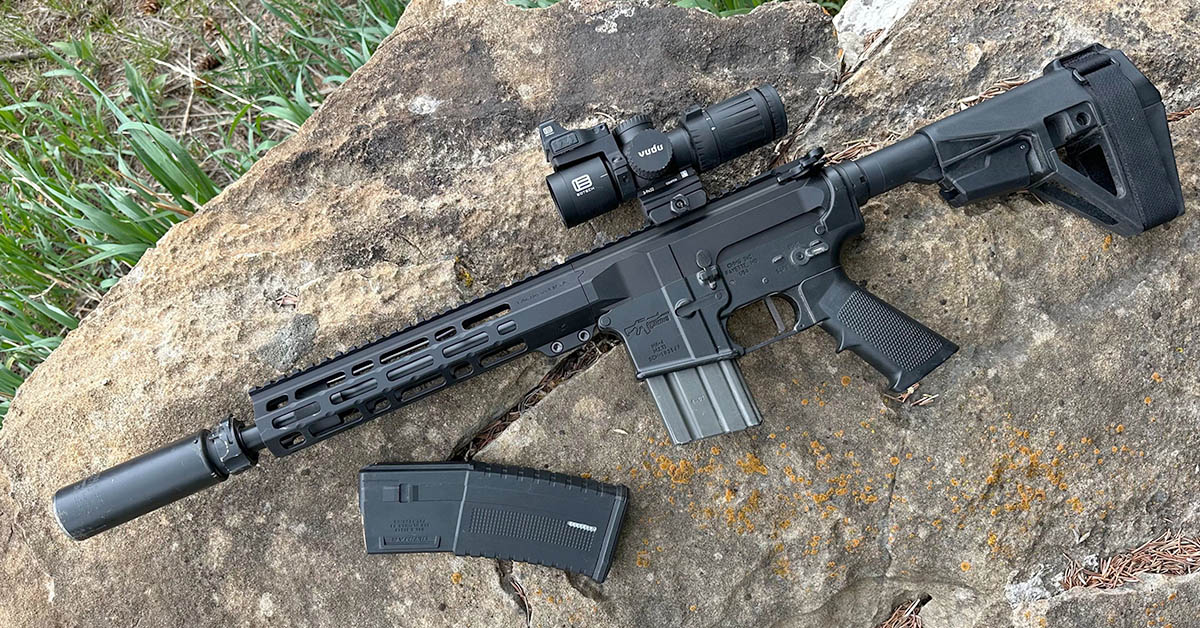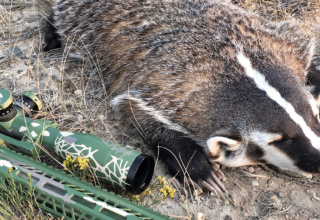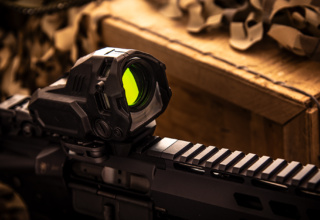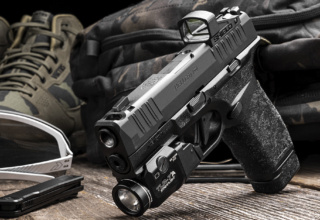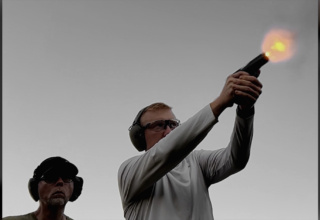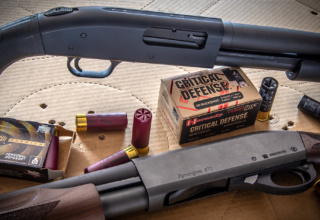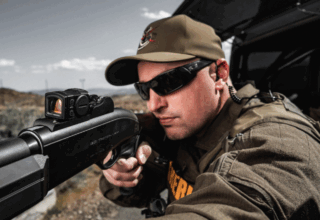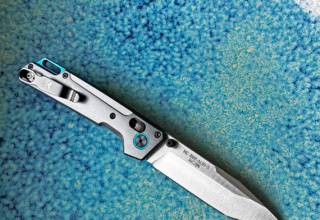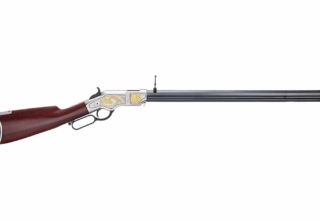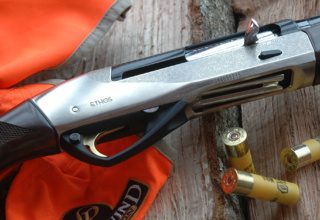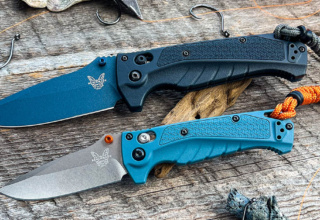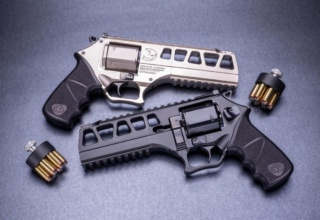Wide-open spaces don’t always demand long barrels and 50x optics. Sometimes, “compact” is the optimal platform.
by Paul G Markel
While I haven’t been doing it “all my life,” I have been whacking western varmints since 2010. Wyoming is home to millions of pesky critters who love to dig holes in cattle grazing land, creating dangerous hazards for our future steak. I have witnessed cattle that broke legs in prairie dog holes. They don’t go to the vet. Unable to graze and get to water, they must be put down. Poisoning the rodents is generally a bad idea. Trapping them is impractical to say the least. And so, if you want to manage the population, you need to put in the work and take them out ballistically.
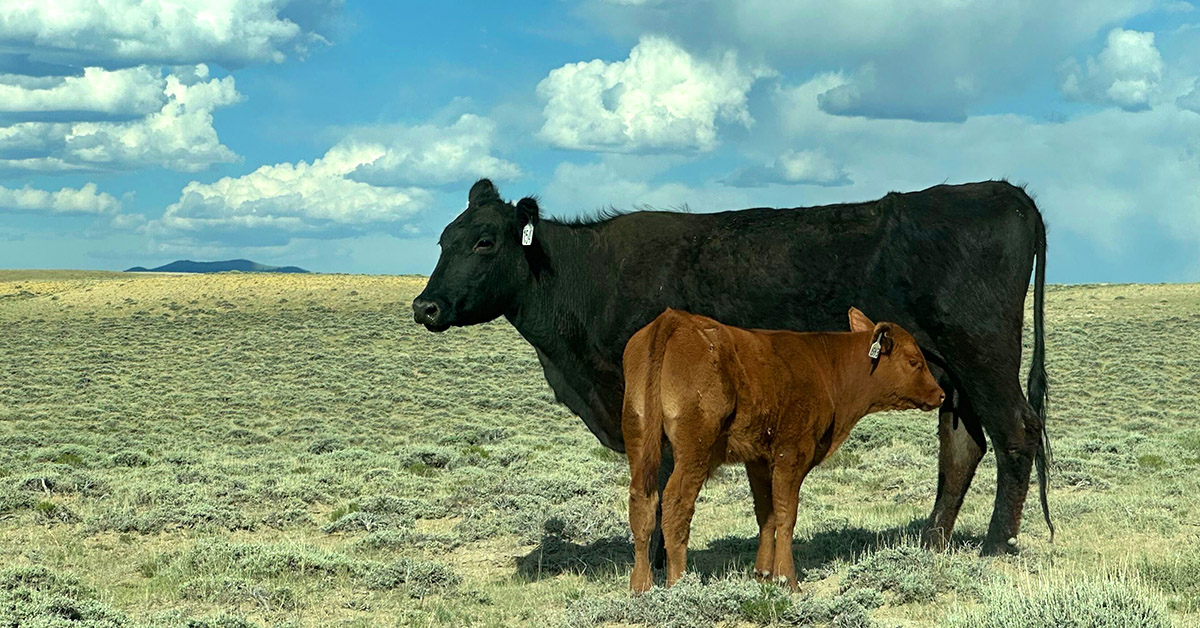
When it comes to the ballistic removal of the western pest species, commonly referred to as “prairie dogs” (no they are not in the canine family, they are closer to squirrels), many folks have a misunderstanding about hardware requirements. Let’s take some time to consider that subject.
Practical Considerations
Wyoming is home to hundreds of thousands of these varmints, and they occupy both private ranch land as well as the millions of acres of BLM land in the state. In Carbon County, Wyoming, an area larger than the state of Connecticut, the great wide-open country is primarily rolling acres of sagebrush. While there are certain parts of the country where you will find prairie dog “towns” with populations of hundreds, perhaps thousands, such is rare in the aforementioned part of the country.
Why Wyoming? Unlike Colorado and Utah, which protect these desert rats, in Wyoming, prairie dog hunting is open all year long, though technically the little pests hibernate in the winter. So, from May to September, it’s game on. No special permits or licenses needed.
As I mentioned at the outset, I’ve been eradicating these varmints for fifteen years or so in Wyoming and I feel like I have a pretty solid handle on practical distances and shooting scenarios. The hardest part about popping the prairie pests is locating them in the sage brush which often grows up to the same height as a standing varmint. For every P-dog standing up ever so nicely on a dirt mound, there are five others roaming in the sagebrush.
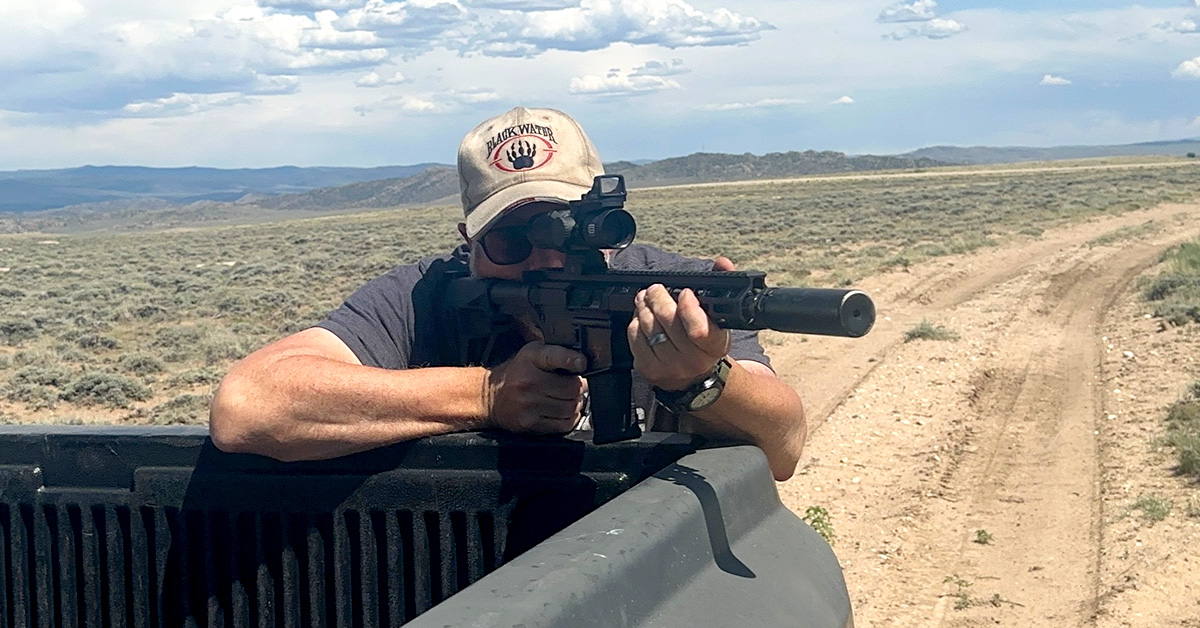
What is the average distance for a shot on one of these critters? Well, in Carbon County, I can honestly say that most shots are taken under 100 yards. Yes, there can be opportunities for longer shots, but those are the exception, not the rule. A typical day in the field here consists of the hunters departing camp in a truck or side-by-side and patrolling around the countryside until their quarry is spotted. You spend a few minutes shooting and then it is on to another spot and so on all day long. Rarely will you be lying prone in one spot for any length of time. It is far more likely that you will be in and out of the vehicle twenty to thirty times during the day. With all the aforementioned in mind, let’s consider some hardware specifics.
AR Pistol: Why Not a Precision Rifle?
When I first started popping these varmints, I thought I needed a bipod. Soon, I realized that I rarely ever used it, and it just added weight on the front of my gun. Also, as shots were relatively close — under 200 yards and closer — a long-barreled gun was not only not needed, but it became impractical due to the need to climb in and out of the truck as often as we did.
Also, you are going to want a suppressor. Your can is going to add on average of five to seven inches to the length of your barrel. So, starting out with an 18- to 20-inch barrel and then adding another six inches of gun muffler makes for a long gun. I should not need to explain the many reasons why a suppressor is a good idea, but one of the reasons is because prairie dog eradication is generally a group effort. You are going to be shooting around other people. The experience is much more enjoyable if everyone has cans. If three guys have cans and you don’t, everyone must muff up and you are the jerk.
You can shoot these prairie squirrels with a .22 LR, but you won’t get much reaction beyond ten to twenty yards. For those 100-yard shots, a rimfire is going to be a handicap. The .17 HMR is popular with folks and good to 100 yards or more. I looked up the cost of .17 HMR ammunition while working on this piece and found it to be on average .35 to .50 cents a shot. For a bit more, you can use .223 Remington and get a bigger bang.
Also, keep in mind that other pests and predators are roaming around the sagebrush country of Wyoming. If you are helping a rancher by eliminating pests, you may come upon jackrabbits and coyotes. Both these creatures are predatory nuisances for farmers and ranchers and need to be culled as well. While primarily nocturnal, jackrabbits and coyotes have been known to materialize seemingly out of nowhere and are targets of opportunity. You are going to have to get on them fast. A long, heavy rifle is going to slow you down.
Thus, based upon everything I just mentioned, a modern AR pistol with a 10- to 11-inch barrel fitted with a suppressor, chambered in .223 Remington, would seem to be the perfect combination of power and practicality.
The Build
Like most Americans living as free men, I have a couple of AR lower receivers. My first consideration was choosing a pistol-length AR upper receiver.
For this task, I went to AT3 Tactical. On their website, AT3 Tactical has a plethora of choices from barrels and components to complete upper receivers. The one I chose was the AT3 complete upper assembly with a 10.5-inch Faxon barrel, an M-LOK aluminum free-float handguard, a nickel-boron bolt carrier group, and standard configuration charging handle.
In my stock of AR components, I already had an AR lower in a pistol configuration. Onto that lower I had recently installed the newest version of an AR pistol brace from SB Tactical. This brace is their SBA5. It is adjustable and fits onto a standard AR buffer tube. The AT3 upper mated to my existing lower perfectly. Now it was time for an optic.
Many folks might believe that a high-powered rifle scope is needed to pop the relatively small targets presented by the prairie dogs; the average adult rodent is about the size of a 24-ounce plastic soda bottle. Keep in mind, though, that the shots will be relatively close and you might need to get on target quickly. You are not getting on target quickly with a variable powered scope turned up to 18x.
The Optic: VUDU 3-9×32 SFP
So, understanding that this gun will likely be used to both take precision shots at small targets and to take rapid shots at moving targets of opportunity, what kind of optic set up would work the best?
EOTech recently released a new optic in their VUDU product line. The VUDU 3-9×32 SFP has the subtitle “super short” due to its compact size. The overall length is only 6.8 inches — just a shade longer than a dollar bill, for reference. The entire setup with mount comes in at an even 16 ounces — a factor that those who carry their rifles in the field will appreciate.
Given that this is a “professional grade” optic, EOTech has included all the premium features for which the VUDU line is famous. The body is aircraft grade aluminum and the scope is resistant to shock, water, and internal fogging due to extreme temperature changes.
As you would expect from a Second Focal Plane optic, the elevation and windage adjustments are covered with protective caps. Adjustments are ¼ MOA for both directions. On the left side of the scope is a third knob that controls the illuminated reticle settings from 1 to 10 brightness. The newest technology for illuminated reticles includes shut-off options between each brightness setting. This design is extremely intelligent as the user no longer must scroll all the way down from, say, a “7” brightness to the off position. Now you can set your brightness to 7 and with one click, up or down, turn it off or on again.
The illuminated reticle is powered by a single CR2032 battery with an approximate operation life of 300 hours. Since you will not be leaving the illumination on 24/7 as you would a standard red dot, this should give you ample battery life.
One of the biggest selling points for this 3-9x super short optic is the fact that you don’t need to use two traditional scope rings. The optic comes equipped with a scope mounting base that will fit on your Weaver or M1913 Picatinny rail. It is also compatible with any aftermarket mini-ACOG mounts.
EOTech has addressed the near-to far-issue with their “super short” 3-9x by offering the scope as a combo with their EFLX mini-red dot sight and a slick-mounting ring for it. If you buy the combo kit, you get all you need: EFLX red dot, aluminum ring mount, tool kit, and CR2023 battery. Adjustments to the EFLX are 1 MOA.
Range Time
The twist rate for the barrel on the AT3 Tactical upper is 1:8. If you know how the .223 Remington works, faster twist rates like 1:7 or 1:8 get better accuracy with heavy bullets, such as those in the 69- to 77-grain weight. Slower twist rates, like a 1:10, benefit from the lighter, faster moving projectiles. Understanding this, I went to my ammo locker and pulled out some Black Hill Ammunition 75-grain Match HP in .223 Remington.
Given that the barrel on this AR pistol is 10.5 inches, I was not expecting long range match accuracy, but I wanted to tip the odds in my favor. Also, my experience over the last twenty years has been that the addition of a suppressor tends to tighten up shot groups.
The easy part was zeroing the EFLX red dot for 25 yards. It took me all of three shots to get it on point. Next, I had to decide the distance I would zero the VUDU 3-9x scope. Before going to the range, I put the load specs into a ballistic calculator to compare impacts for the anticipated distances I would be shooting. I found that if I zeroed at 50 yards, impacts would be 3/4-inch up at 75 yards, 1.2-inch at 100 yards, and 1-inch high at 150 yards. At 200 yards, impact would be just a hair over 1/2-inch low. Thus, by holding center mass on targets from 50 to 200 yards, I would get hits if I did my part. Close-in targets would be a task for the red dot. Stabilizing the AR pistol, it took me another three shots to get the VUDU scope zeroed to point-of-aim / point-of-impact at 50 yards.
With the red dot and the magnified optic zeroed, I decided to put some plastic bottles out on the range as reasonable facsimiles of prairie dogs. I was not disappointed by the results of the combined barrel, ammunition, and scope. With all the prep work complete, it was time to head to the field.
Field Work
The smell of sage lingered in my nostrils, and my boots were coated in fine dust as I sat to complete this portion of the review. I blocked out a couple of days in Carbon County to run the gun. Even if I never pressed the trigger on a single prairie dog, the time afield would be worth it. The view of the still snowcapped mountains all around was magnificent.
I constantly encountered the American Pronghorn (aka “antelope”). While the bucks generally viewed me merely with curiosity, often not even rising from their reclined position on the ground as I drove by, the does and their young were a bit more skittish. I watched as their white rumps sped away across the sagebrush fields. Pronghorns are the fastest land mammals in North America.
Fear not. I did my part eradicating the varmints. After the first couple, you quit keeping score, but there were many. I was hoping for an opportunity to whack a jackrabbit as evening approached. Predictably, they became active, and I was not disappointed. Before the sun set, I bagged two of the wiry creatures; one close up using the EFLX red dot and one farther away using the scope.
Speaking of which, considering my time in the field, I would estimate that I used the red dot for about 25- to 30-percent of the shots taken either on near targets or moving ones, as was the case with one jackrabbit.
As I expected, my custom-built AR pistol was easy to maneuver in and out of the truck. I was relatively lightweight at around seven pounds with the optic and a 20-round magazine in place. While semi-auto guns are not super-quiet due to some of the noise escaping from the action, the use of the gun muffler did, indeed, make the experience more enjoyable.
The moral of the story, I suppose, is that I used quality components, including the ammunition, to configure this AR pistol and I was rewarded with performance. If you have an AR build project bouncing around in your head, it’s a safe bet that the folks at AT3 Tactical have what you need.
Until next time, keep shooting straight.

